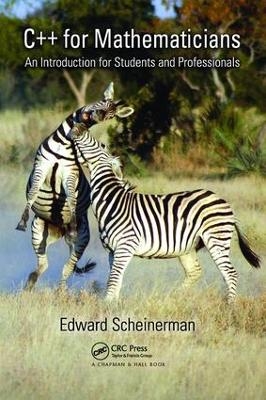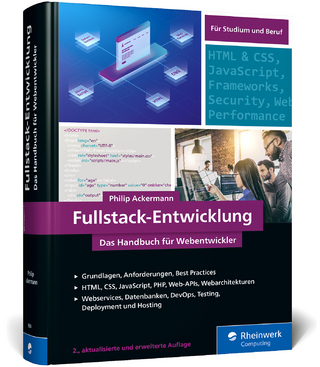
C++ for Mathematicians
An Introduction for Students and Professionals
Seiten
2018
CRC Press (Verlag)
978-1-138-41327-6 (ISBN)
CRC Press (Verlag)
978-1-138-41327-6 (ISBN)
The first book available on C++ programming that is written specifically for a mathematical audience, C++ for Mathematicians omits the language’s more obscure features in favor of the aspects of greatest utility for mathematical work. Emphasizing the essential role of practice as part of the learning process, the book is ideally desig
For problems that require extensive computation, a C++ program can race through billions of examples faster than most other computing choices. C++ enables mathematicians of virtually any discipline to create programs to meet their needs quickly, and is available on most computer systems at no cost. C++ for Mathematicians: An Introduction for Students and Professionals accentuates C++ concepts that are most valuable for pure and applied mathematical research.
This is the first book available on C++ programming that is written specifically for a mathematical audience; it omits the language’s more obscure features in favor of the aspects of greatest utility for mathematical work. The author explains how to use C++ to formulate conjectures, create images and diagrams, verify proofs, build mathematical structures, and explore myriad examples. Emphasizing the essential role of practice as part of the learning process, the book is ideally designed for undergraduate coursework as well as self-study. Each chapter provides many problems and solutions which complement the text and enable you to learn quickly how to apply them to your own problems. Accompanying downloadable resources provide all numbered programs so that readers can easily use or adapt the code as needed.
Presenting clear explanations and examples from the world of mathematics that develop concepts from the ground up, C++ for Mathematicians can be used again and again as a resource for applying C++ to problems that range from the basic to the complex.
For problems that require extensive computation, a C++ program can race through billions of examples faster than most other computing choices. C++ enables mathematicians of virtually any discipline to create programs to meet their needs quickly, and is available on most computer systems at no cost. C++ for Mathematicians: An Introduction for Students and Professionals accentuates C++ concepts that are most valuable for pure and applied mathematical research.
This is the first book available on C++ programming that is written specifically for a mathematical audience; it omits the language’s more obscure features in favor of the aspects of greatest utility for mathematical work. The author explains how to use C++ to formulate conjectures, create images and diagrams, verify proofs, build mathematical structures, and explore myriad examples. Emphasizing the essential role of practice as part of the learning process, the book is ideally designed for undergraduate coursework as well as self-study. Each chapter provides many problems and solutions which complement the text and enable you to learn quickly how to apply them to your own problems. Accompanying downloadable resources provide all numbered programs so that readers can easily use or adapt the code as needed.
Presenting clear explanations and examples from the world of mathematics that develop concepts from the ground up, C++ for Mathematicians can be used again and again as a resource for applying C++ to problems that range from the basic to the complex.
Edward Scheinerman
PROCEDURES: The Basics. Numbers. Greatest Common Divisor. Random Numbers. Arrays. OBJECTS: Points in the Pane. Pythagorean Triples. Containers. Modular Arithmetic. Points in the Projective Plane. Permutations. Polynomials. Using Other Packages. Input/Output and Strings. APPENDICES: Your C++ Computing Environment. Using Doxygen. C++ Reference. Index.
| Erscheinungsdatum | 14.07.2018 |
|---|---|
| Verlagsort | London |
| Sprache | englisch |
| Maße | 156 x 234 mm |
| Gewicht | 453 g |
| Themenwelt | Mathematik / Informatik ► Informatik ► Programmiersprachen / -werkzeuge |
| Mathematik / Informatik ► Mathematik | |
| ISBN-10 | 1-138-41327-5 / 1138413275 |
| ISBN-13 | 978-1-138-41327-6 / 9781138413276 |
| Zustand | Neuware |
| Haben Sie eine Frage zum Produkt? |
Mehr entdecken
aus dem Bereich
aus dem Bereich
Das Handbuch für Webentwickler
Buch | Hardcover (2023)
Rheinwerk (Verlag)
49,90 €
Grundlagen und praktische Anwendungen von Transpondern, kontaktlosen …
Buch (2023)
Hanser (Verlag)
89,99 €


